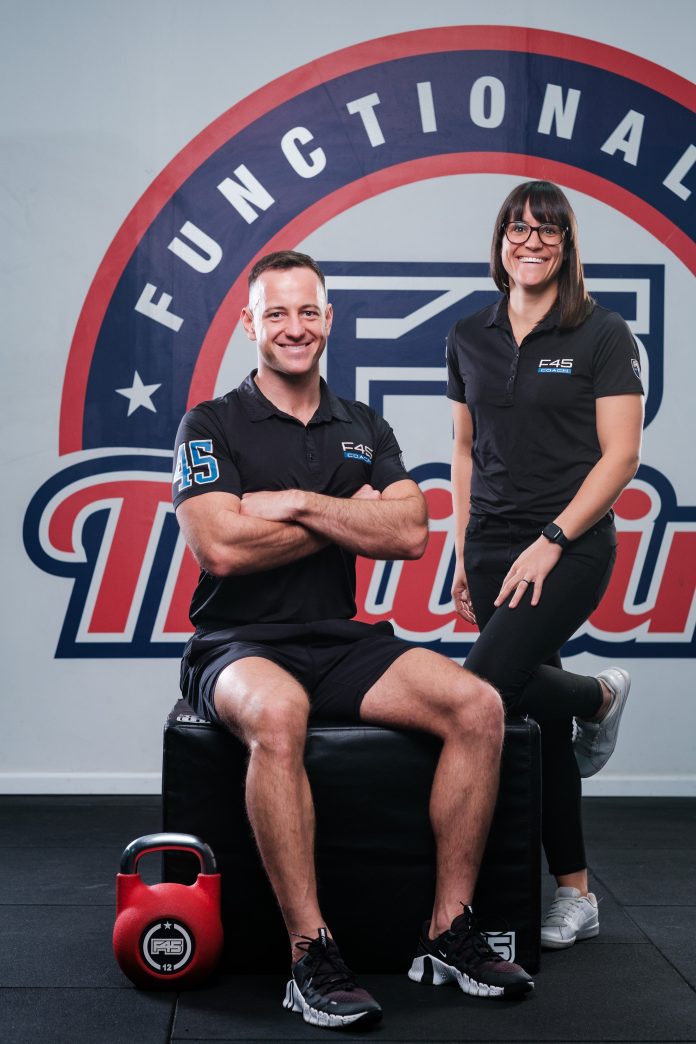Osteoporosis, which means porous bones, is a progressive weakening condition that can result in broken bones frequently in the hips and spine. Menopause is the leading cause of osteoporosis, as hormones change to accommodate menopausal changes – oestrogen levels start fluctuating and then dropping. Oestrogen prevents bones from getting weaker by slowing down the natural breakdown of bone, which is significantly reduced in menopause.
‘Say no to fragile bones,’ is this year’s theme for World Osteoporosis Day, annually recognised on 20 October. According to the International Osteoporosis Foundation, about 200 million women and 5.5 million men aged between 60 to 90 years of age are affected by osteoporosis.
People often mistakenly think that exercising will lead to further bone damage or a fracture but exercising and using your muscles help protect your bones. Karen Loader, CEO, of F45 Training advises that exercise is imperative for everyone but even more so for women who are approaching perimenopause and menopause. Loader says, “Exercising if you have osteoporosis means finding the safest, most enjoyable activities based on your overall health and amount of bone loss. Certain types of exercise strengthen muscles and bones, and other types can improve balance.”
It is never too late to exercise says Loader as regular exercise can:
- -Decrease the risk of broken bones
- -Improve posture
- -Lessen pain
- -Increase muscle strength
- -Improve balance
Preparation is key. Before you start exercising to mitigate osteoporosis, consult your doctor in case you need a bone density test if you haven’t already had one, and a fitness test is also recommended to gauge baseline fitness. People with more advanced osteoporosis who are at a higher risk of breaking a bone will be discouraged from doing certain exercises as they could lead to further damage.
Choose a variety of exercises, says Loader, that include, “strength training, weight bearing exercises, flexibility, stability and balance exercises,” as listed below:
Strength training
Strength training includes the use of resistance bands, free weights, or your own body weight to strengthen muscles, tendons and bones. Strength training is helpful to build back muscles that are important for posture and can also help support bone density.
Weight bearing low impact aerobic exercises
Weight-bearing low impact aerobic activities involve doing aerobic exercise on your feet, with your bones supporting your weight. Walking, elliptical training machines, stair climbing, gardening and even dancing are great.
Flexibility exercises
Moving joints through their full range of motion helps keep muscles working well. Stretches are best performed after muscles are warmed up. Ideally stretch at the beginning and end of an exercise session. Avoid stretches that require bending at the waist or flexing the spine.
Sustainability and balance exercises
Stability and balance exercises are especially important for people with osteoporosis as they help muscles work together and will assist with preventing falls, in turn preventing fractures and breaks. Simple exercise that improves stability and balance include standing on one leg and holding that position on and off for a certain amount of time.
“Avoid high-impact exercises like running, jogging, or jumping, any jerky or rapid movements as these can lead to fractures in weakened bones. Bending forward or twisting at the waist can also increase the risk for spine fractures. Exercises to also avoid include touching your toes or doing sit-ups, golf, tennis, bowling and some yoga poses. Don’t let fear of bone fractures keep you from being active and having fun. Don’t underestimate the effect of the correct exercises to help people manage osteoporosis,” concludes Loader.

